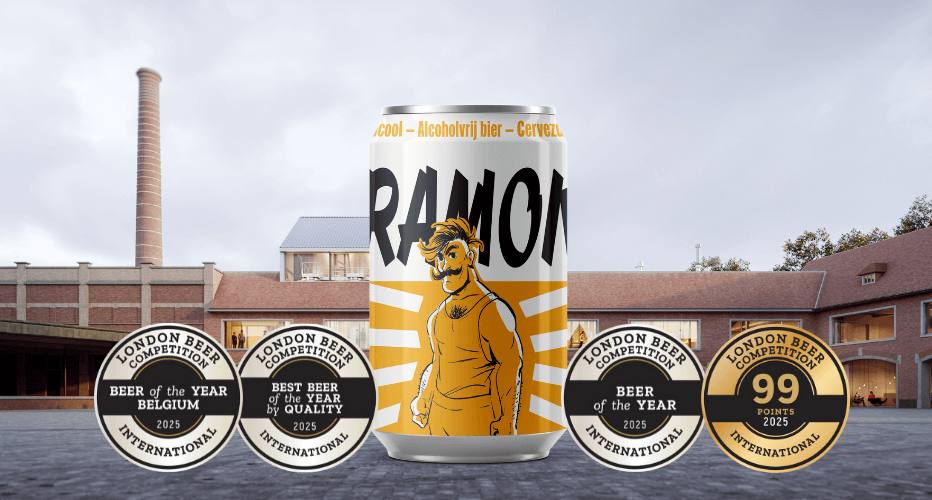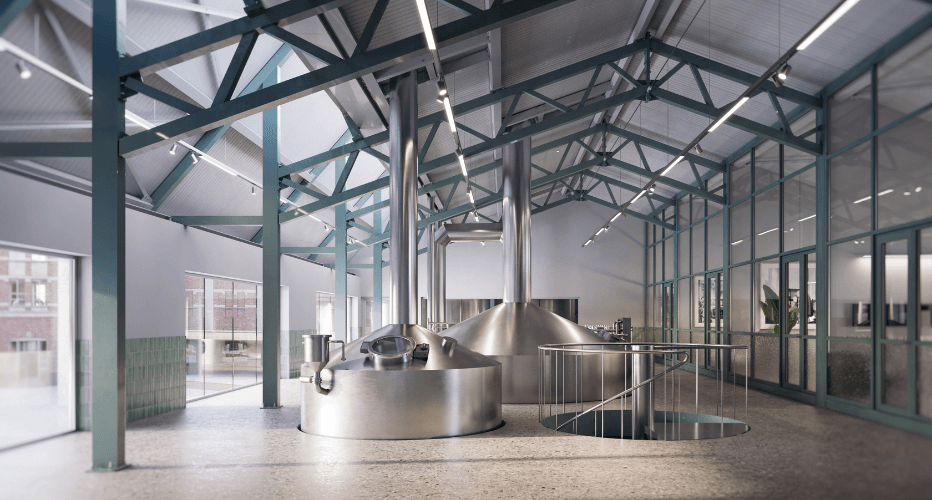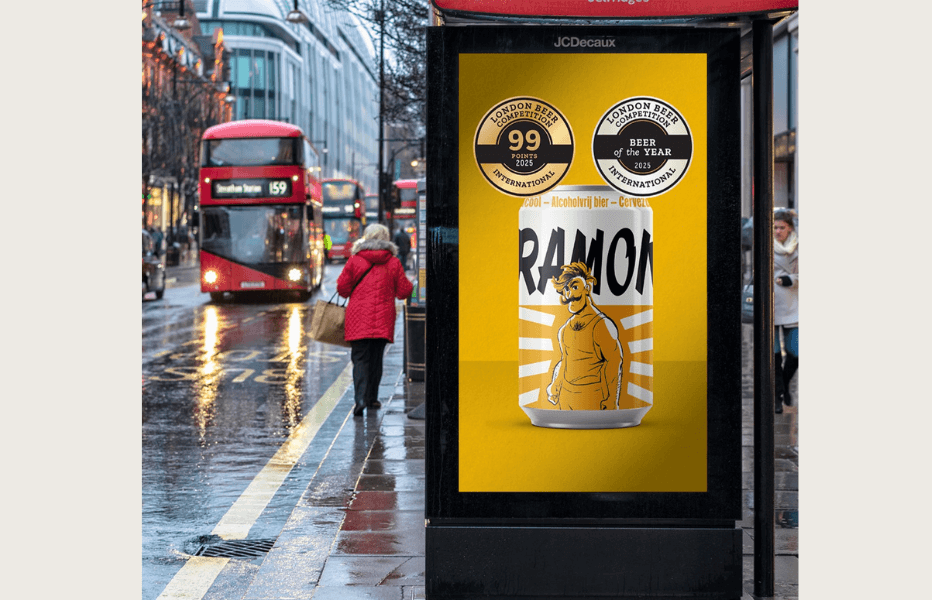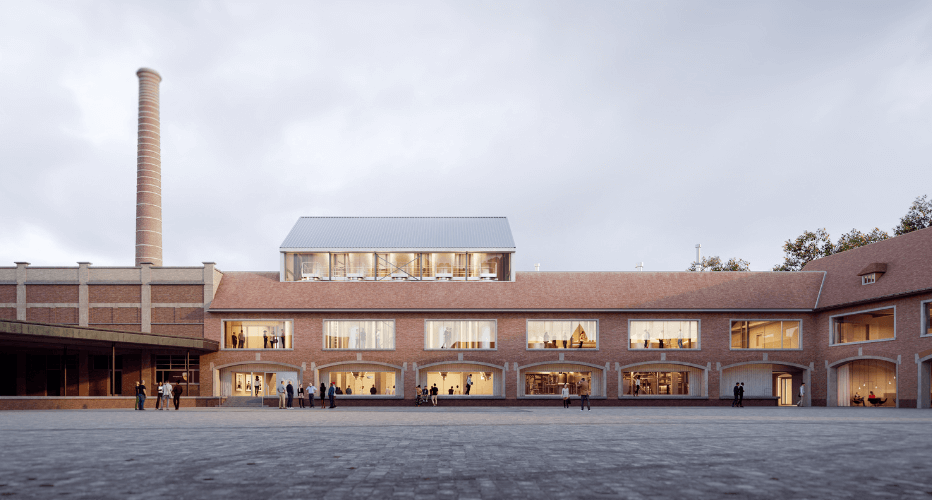Early Bird Deadline
30 November 2025
Judging
Date
23 March 2026
Winners Announcement
22 April 2026
30 November 2025
23 March 2026
22 April 2026

When a non-alcoholic beer is crowned “Beer of the Year” at a global competition judged by industry professionals, it says something about where the market — and taste — is heading. Ramon, brewed by Belgium’s family-owned Roman Brewery, made exactly that statement at the 2025 London Beer Competition.
At just 0.3% ABV and 28 calories per 100ml, Ramon is not your average alcohol-free beer — and that’s the point. Brewed using a specially selected yeast that minimises alcohol production while unlocking aromatic, hop-driven flavour, Ramon sits somewhere between a Pilsner, wheat beer, and IPA. It’s refreshing, balanced, and, according to its makers, designed for people who want flavour without compromise.
We spoke to Thomas Lauwaert, Marketing & Communication Head at Roman Brewery, about Ramon’s breakthrough win, why sampling matters more than marketing spend, and how a centuries-old brewery is leaning into the future — one sustainable, alcohol-free pint at a time.

Image: Carlo (left) and Lode (right) Roman, the fourteenth generation at the helm of Brouwerij Roman.
Thanks! We are especially impressed to be voted “best beer ” with a non-alcoholic beer. Ramon has already won awards at other competitions, but always within the “alcohol-free” category. To surpass that now, and that among many other beers, is a very nice honour. It is mainly that message we want to bring now: alcohol-free beer has long - and perhaps rightly - had an image of bland quality, but those times are far behind us. With a good brand identity and a great taste, it should be possible to make consumers choose positively between classic beers and alcohol-free beers. That freedom of choice is important.

Image: Ramon named “Beer of the Year” at the 2025 London Beer Competition.
The playing field for flavour within non-alcoholic beer is smaller. The simple fact is that alcohol is a carrier of flavour. Our solution lies in the choice of those hops. These give the right, unique flavour to Ramon: fruity yet refreshing. There are only a limited number of ingredients in beer: you'd better make the right, quality choices.
In terms of taste, Ramon falls outside all known categories: it does taste like a lager, but you also recognise a also a wheat beer or even an IPA. We deliberately choose not to filter the alcohol but to work with a special yeast that - apart from a minimal boost (hence the 0.3%) in the beginning - can generate flavour without producing alcohol as a by-product.

Image: Roman Brewery.
All the beers we brew at Roman Brewery - both with and without alcohol - we make for a wide audience. A very important feature in our brewing DNA is “balance”. For us, the test is in the consumer reaction: after drinking one, you should still be able to feel like drinking another. So no extreme flavours. Moreover, Ramon is low in calories and therefore perfectly suited to an active lifestyle.
As of today, there are no importers in the UK. We are actively looking for a good partner because we are convinced that Ramon can be successful within the UK. In other European countries, we have already started an expansion strategy and notice that France, Portugal, and Switzerland are already building nice volumes. In Belgium, Ramon has expanded successfully in retail, online, and on-trade.

Image: Ramon with winning medals displayed in the UK.
We are always looking at opportunities with our partners to highlight Ramon and rotate stock. We may not have the great marketing budgets, but we strongly believe in sampling. For example, we know that if people taste it, they are “sold”. Ramon is a fun brand to work with, and that gives opportunities for activation: for instance, there are fun socks as gadgets or cool POS material.
The Brewery has existed for almost 500 years, currently the 14th generation (Lode & Carlo) father-on-son is heading the brewery and preparing it for a possible 15th generation. Sustainability is at the core of our brewery here. Beer has only a few ingredients, which, moreover, are all natural, so we had better take good care of our resources. Every demand within the brewery is linked to the sustainability test: waste flows, energy generation and recovery, lighting plan, packaging, transport... A new brewing hall was opened at the beginning of 2025, providing major reductions in both water and energy. This is how we continue to build a sustainable future for the brewery.

Image: Brouwerij Roman.
Recently, Ramon is also available on cask. Here, too, we can differentiate ourselves, as quality alcohol-free beer on draught is not yet widespread. To the consumer, Ramon is available in cans, but possibly in the future it will also become available in bottles to serve the deregulated market. Furthermore, we also want to grow with our Gentse Strop (silver medal winner at the competition).
As Lauwaert notes, Ramon’s success reflects a wider shift in how people drink — and why. While Roman Brewery has long been rooted in tradition, it’s clearly not confined by it. With sustainability embedded in its operations, a 14th generation of leadership at the helm, and a beer that’s winning hearts beyond its category, Roman is quietly — and confidently — proving that less alcohol doesn’t mean less ambition.
In conversation with Malvika Patel, Editor and VP, Beverage Trade Network
Also Read:
International London Beer Competition 2025 Results Announced
Why Low and No Alcohol Beers Are Booming in the UK
Q&A With Sid Patel: CEO of London Competitions and Beverage Trade Network
Show your beers where it matters. Get your products tasted by top buyers and experts at the London Competitions — enter now.